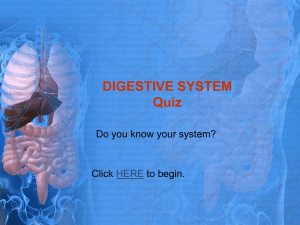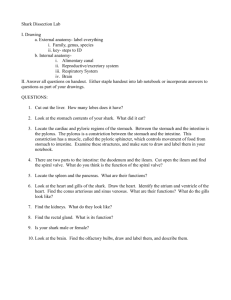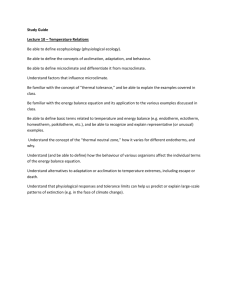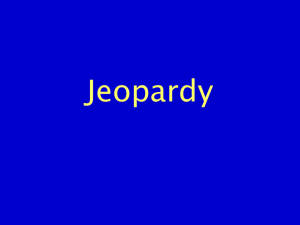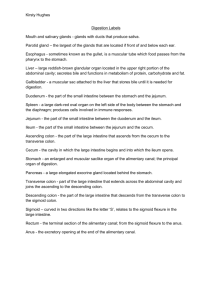File
advertisement
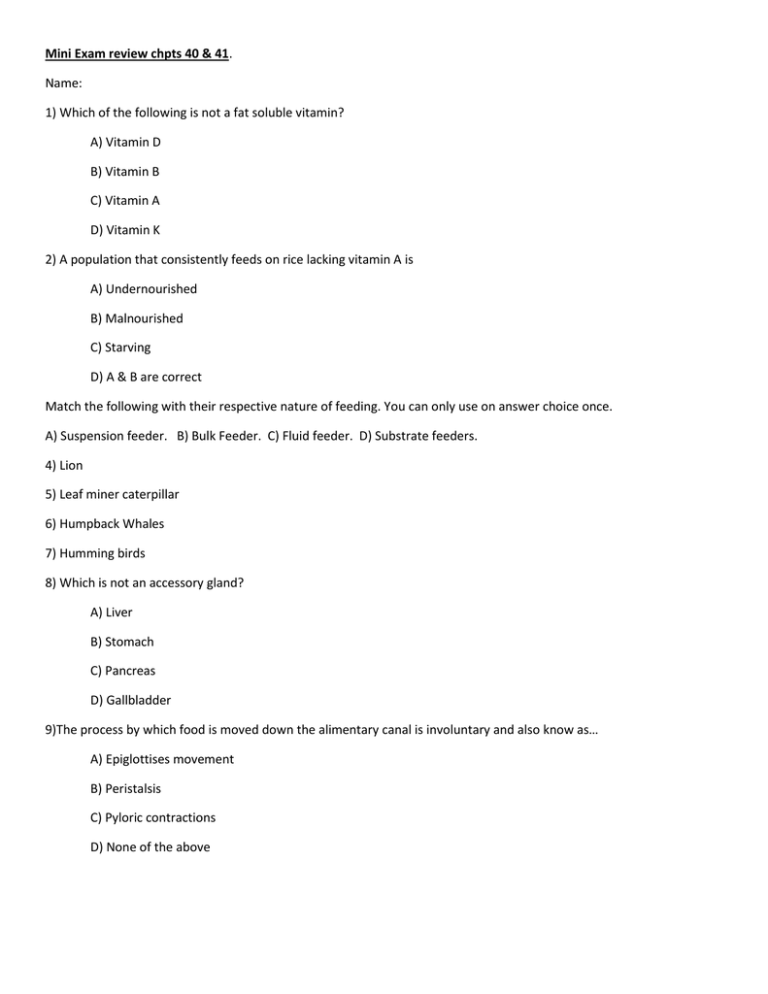
Mini Exam review chpts 40 & 41. Name: 1) Which of the following is not a fat soluble vitamin? A) Vitamin D B) Vitamin B C) Vitamin A D) Vitamin K 2) A population that consistently feeds on rice lacking vitamin A is A) Undernourished B) Malnourished C) Starving D) A & B are correct Match the following with their respective nature of feeding. You can only use on answer choice once. A) Suspension feeder. B) Bulk Feeder. C) Fluid feeder. D) Substrate feeders. 4) Lion 5) Leaf miner caterpillar 6) Humpback Whales 7) Humming birds 8) Which is not an accessory gland? A) Liver B) Stomach C) Pancreas D) Gallbladder 9)The process by which food is moved down the alimentary canal is involuntary and also know as… A) Epiglottises movement B) Peristalsis C) Pyloric contractions D) None of the above 10) A mouse uses ______ energy per kilogram of body weight compared to an elephant, therefore in smaller animals the rate of energy use per cell is _______ than that in larger animals. A)less, more B) less, greater C) less, less D) more, less E) more, greater 11) The epithelium best adapted for a body surface subject to abrasion is A) simple squamous. B) simple cuboidal. C) simple columnar. D) stratified columnar. E) stratified squamous. 12) Fibroblasts secrete A) fats. B) chondroitin sulfate. C) interstitial fluids. D) calcium phosphate for bone. E) proteins for connective fibers. 13) Cardiac muscle is both A) striated and branched. B) striated and unbranched. C) smooth and voluntary. D) striated and voluntary. E) smooth and involuntary. 14) Which of the following is incorrectly paired with a digestive enzyme? (From Kaplan 2010 MCAT) A) Sucrase – salivary glands B) Carboxypeptidase – pancreas C) Trypsin – pancreas D) Lactase – intestinal glands 15) You are looking at a CT scan of the abdomen of a child who presented to you with various symptoms, including projectile vomiting. You notice a constriction in the digestive system that prevents food from reaching the small intestine. Which structure is the most likely site of the problem? (USMLE question) A) Cecum B) Ileum C) Rectum D) sphincter (pyloric) E) Jejunum 16) All of the following occur in the mouth EXCEPT (Kaplan 2010 MCAT) A) Moistening of food B) Bolus formation C) Chemical digestion of starch D) Chemical digestion of proteins 17) Which of the following is NOT part of the small intestine? A) Ileum B) Cecum C) Jejunum D) Duodenum E) B & C 18) Site of protein digestion A) Mouth and Stomach B) Stomach and large intestine C) Stomach and small intestine D) Small intestine and liver 19) Some nutrients are considered "essential" in the diets of certain animals because A) only those animals use the nutrients. B) they are subunits of important polymers. C) they cannot be manufactured by the organism. D) they are necessary coenzymes. E) only some foods contain them. 20) As body size increases in animals, there is A) a decrease in the surface-to-volume ratio. B) no further reproduction in aqueous environments. C) the tendency for larger bodies to be more variable in metabolic rate. D) an increase in migration to tropical areas. E) an increase in the surface-to-volume ratio. 21) An ectotherm is more likely to survive an extended period of food deprivation than would an equally-sized endotherm because A) the ectotherm maintains a higher basal metabolic rate. B) the ectotherm expends more energy/kg body weight than the endotherm. C) the ectotherm invests little energy in temperature regulation. D) the ectotherm metabolizes its stored energy more readily than can the endotherm. E) the ectotherm has greater insulation on its body surface. Number out the following diagram. The following have already been given. 3. Ascending colon. 4. Sigmoid colon. 12. Sigmoid colon. 13. Ileum. 11. Jejunum Complete the rest of the diagram.
